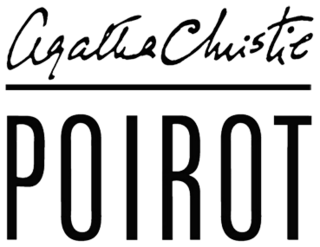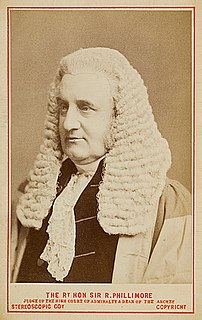
Dame Agatha Mary Clarissa Christie, Lady Mallowan, was an English writer known for her 66 detective novels and 14 short story collections, particularly those revolving around fictional detectives Hercule Poirot and Miss Marple. She also wrote the world's longest-running play, The Mousetrap, which has been performed in the West End since 1952, as well as six novels under the pseudonym Mary Westmacott. In 1971, she was made a Dame (DBE) for her contributions to literature. Guinness World Records lists Christie as the best-selling fiction writer of all time, her novels having sold more than two billion copies.

Hercule Poirot is a fictional Belgian detective created by British writer Agatha Christie. Poirot is one of Christie's most famous and long-running characters, appearing in 33 novels, two plays, and more than 50 short stories published between 1920 and 1975.

Kensington is an affluent district in the Royal Borough of Kensington and Chelsea in the West of Central London.

Notting Hill is a district of West London, England, in the Royal Borough of Kensington and Chelsea. Notting Hill is known for being a cosmopolitan and multicultural neighbourhood, hosting the annual Notting Hill Carnival and Portobello Road Market. From around 1870, Notting Hill had an association with artists.

Poirot is a British mystery drama television programme that aired on ITV from 8 January 1989 to 13 November 2013. David Suchet starred as the eponymous detective, Agatha Christie's fictional Hercule Poirot. Initially produced by LWT, the series was later produced by ITV Studios. The series also aired on VisionTV in Canada and on PBS and A&E in the United States.

Baron Phillimore, of Shiplake in the County of Oxford, is a title in the Peerage of the United Kingdom. It was created in 1918 for the former Judge of the High Court of Justice and Lord Justice of Appeal, Sir Walter Phillimore, 2nd Baronet. The Phillimore Baronetcy, of The Coppice, had been created in the Baronetage of the United Kingdom on 28 December 1881 for his father Sir Robert Phillimore, who was also a noted lawyer and judge. The first Baron was succeeded by his son, the second Baron.

Holland Park is an area of Kensington, on the western edge of Central London, that contains a street and public park of the same name. It has no official boundaries but is roughly bounded by Kensington High Street to the south, Holland Road to the west, Holland Park Avenue to the north, and Kensington Church Street to the east. Adjacent districts are Notting Hill to the north, Earl's Court to the south, and Shepherd's Bush to the northwest.

Greenway, also known as Greenway House, is an estate on the River Dart near Galmpton in Devon, England. Once the home of the author Agatha Christie, it is now owned by the National Trust.

Dead Man's Folly is a work of detective fiction by Agatha Christie, first published in the US by Dodd, Mead and Company in October 1956 and in the UK by the Collins Crime Club on 5 November of the same year. The US edition retailed at $2.95 and the UK edition at twelve shillings and sixpence (12/6). It features Hercule Poirot and Ariadne Oliver.
Fox Primary School is a primary school in London for children between the ages of 4 and 11, in the Royal Borough of Kensington and Chelsea. It is located on Kensington Place, between Kensington Church Street and Notting Hill Gate.
Black Coffee is a play by the British crime-fiction author Agatha Christie (1890–1976) which was produced initially in 1930. The first piece that Christie wrote for the stage, it launched a successful second career for her as a playwright.

Little Holland House was the dower house of Holland House in the parish of Kensington, Middlesex, England. It was situated at the end of Nightingale Lane, now the back entrance to Holland Park and was demolished when Melbury Road was made. Number 14 Melbury Road marks its approximate location.

Lichfield Court, in Richmond, London, consists of two Grade II listed purpose-built blocks of flats. Designed by Bertram Carter and built in fine Streamline Moderne style, it was completed in 1935.

Agatha Christie (1890–1976) was an English crime novelist, short-story writer and playwright. Her reputation rests on 66 detective novels and 15 short-story collections that have sold over two billion copies, an amount surpassed only by the Bible and the works of William Shakespeare. Her works contain several regular characters with whom the public became familiar, including Hercule Poirot, Miss Marple, Tommy and Tuppence Beresford, Parker Pyne and Harley Quin. Christie wrote more Poirot stories than any of the others, even though she thought the character to be "rather insufferable". Following the publication of the 1975 novel Curtain, Poirot's obituary appeared on the front page of The New York Times.

Holland Park Avenue is a street located in the Royal Borough of Kensington and Chelsea, in west central London. The street runs from Notting Hill Gate in the east to the Holland Park Roundabout in the west, forms a part of the old west road connecting London with Oxford and the west of England, and is designated part of the A402 road.

Debenham House at 8 Addison Road is a large detached house in the Holland Park district of Kensington and Chelsea, W14. Built in the Arts and Crafts style by the architect Halsey Ricardo, it is a Grade I listed building.

Hornton Street is a street in Kensington, London W8. It runs north to south from Sheffield Terrace to Kensington High Street.

Campden Hill Road is a street in Kensington, London W8. It runs north to south from Notting Hill Gate to Kensington High Street.

Phillimore Gardens is a street in Kensington/Holland Park, London.

Rosalind Margaret Clarissa Hicks was the only child of author Agatha Christie.


















